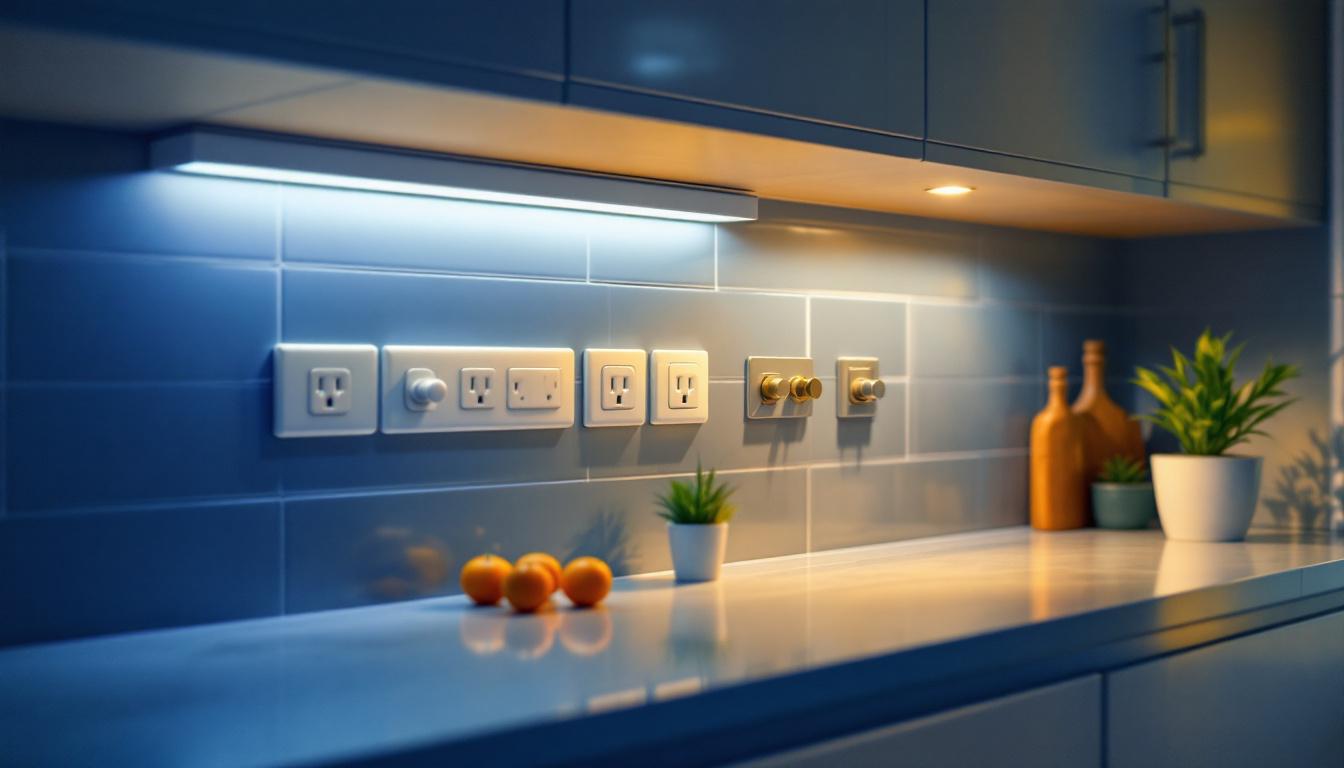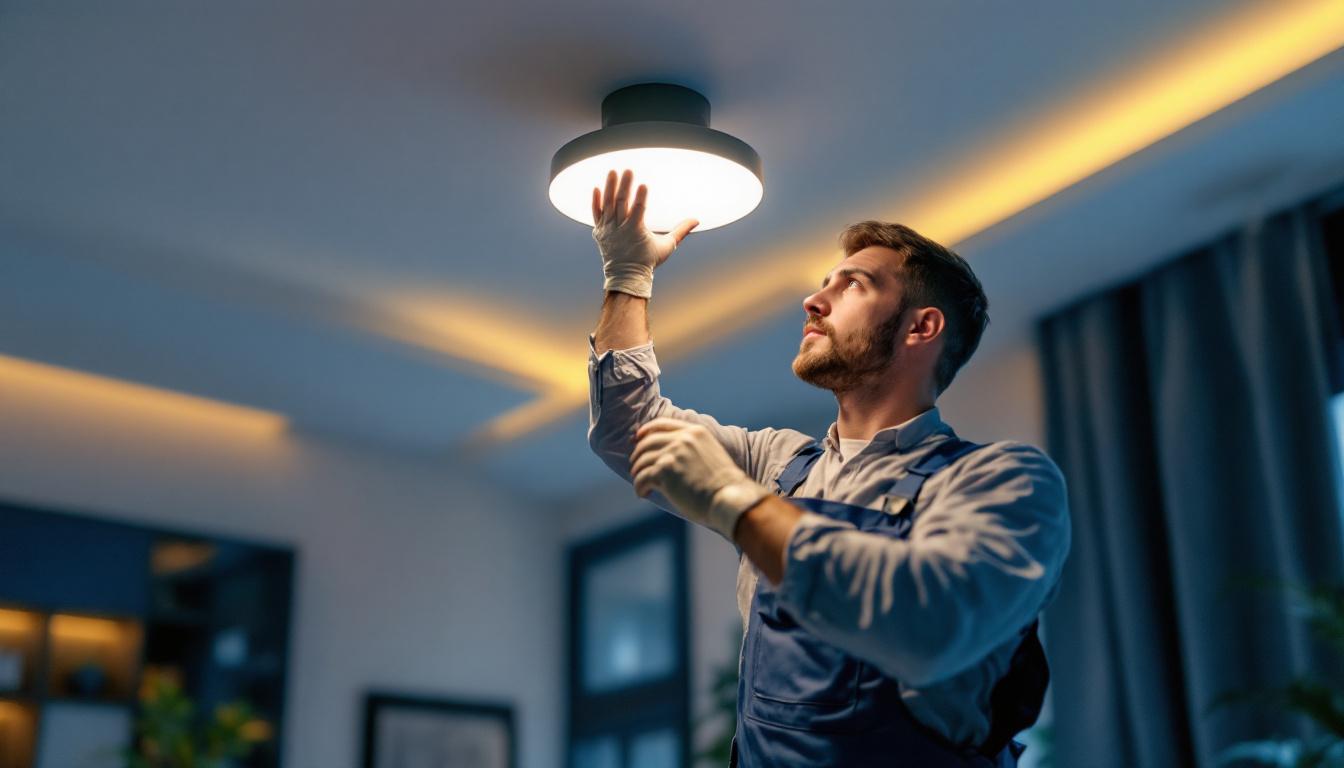
Lighting projects in white industrial ceiling basements can present unique challenges and opportunities. As a lighting contractor, understanding the nuances of these spaces can make all the difference between a successful installation and a costly oversight. This article aims to provide insights into common pitfalls and how to navigate them effectively.
Before diving into lighting solutions, it’s essential to grasp the characteristics of a white industrial ceiling basement. These spaces often feature high ceilings, expansive areas, and a variety of structural elements that can affect lighting choices. The industrial aesthetic, characterized by raw materials and open spaces, presents unique opportunities and challenges for lighting design. Understanding the interplay between these elements can lead to a more cohesive and functional lighting scheme.
The height of the ceiling in a basement can significantly influence the type of lighting fixtures that are appropriate. High ceilings may require different mounting techniques and fixture types compared to lower ceilings. Additionally, structural elements such as beams and ductwork can obstruct light distribution, necessitating careful planning to ensure even illumination. The use of track lighting or adjustable fixtures can be particularly beneficial in these scenarios, allowing for flexibility in directing light where it is needed most.
When assessing the space, take note of any obstacles that may impact light placement. For instance, if there are low-hanging ducts or beams, it may be necessary to opt for flush-mounted fixtures or pendant lights that can be adjusted to avoid these obstructions. Furthermore, consider the material and color of the ceiling; a white finish can reflect light effectively, enhancing brightness in the space, while darker colors may absorb light and create a more subdued atmosphere. Understanding these nuances can help in selecting the right fixtures that not only illuminate but also complement the overall design.
While basements are typically devoid of natural light, some may have windows or openings that let in daylight. Evaluating these sources is crucial, as they can influence the overall lighting design. If natural light is present, consider how it changes throughout the day and how it can be complemented with artificial lighting. The orientation of windows, for instance, can play a significant role in how much light enters the space at different times, which can inform decisions on fixture placement and brightness levels.
Incorporating daylight-responsive controls can enhance energy efficiency and create a more dynamic lighting environment. This approach not only reduces energy costs but also improves the aesthetic appeal of the space. Additionally, using light-colored walls and reflective surfaces can amplify the effects of natural light, creating a more inviting atmosphere. By strategically layering artificial lighting with the available natural light, you can achieve a balanced illumination that adapts to the needs of the space and its occupants, fostering a more versatile and pleasant environment.
Once the space has been thoroughly assessed, the next step is selecting appropriate lighting fixtures. The options can be overwhelming, so it’s essential to focus on functionality, aesthetics, and energy efficiency.
In a white industrial ceiling basement, several types of fixtures may be suitable. High-bay lights are often ideal for high ceilings, providing ample illumination while minimizing glare. LED fixtures are increasingly popular due to their energy efficiency and long lifespan. These lights not only reduce electricity costs but also contribute to a lower carbon footprint, making them an environmentally friendly choice.
Additionally, consider the use of track lighting or pendant fixtures to create focal points or highlight specific areas. This versatility allows for a layered lighting approach, which can enhance both functionality and design. For instance, pendant lights can be strategically placed over a workbench or seating area, adding both style and practicality. When selecting fixtures, think about the materials and finishes as well; metal, glass, and even wood can all contribute to the overall aesthetic, complementing the industrial theme while adding warmth and texture.
Color temperature plays a significant role in the overall ambiance of a basement. Warmer tones (around 2700K-3000K) can create a cozy atmosphere, while cooler tones (4000K-5000K) can make the space feel more industrial and modern. Understanding the intended use of the space will guide the choice of color temperature. For example, if the basement is to be used as a recreational area, warmer lighting may encourage relaxation and social interaction, while cooler lighting might be more suitable for a home gym or office space.
Moreover, the Color Rendering Index (CRI) is crucial for ensuring that colors appear true to life under artificial lighting. A higher CRI (above 80) is generally preferred for spaces where color accuracy is important, such as art studios or workshops. In addition, consider the placement of your fixtures; strategically positioning lights to minimize shadows can enhance the overall effectiveness of the lighting. Utilizing dimmers can also provide flexibility, allowing you to adjust the brightness according to the time of day or activity, creating a dynamic environment that adapts to your needs.
With the right fixtures selected, the next step involves planning the layout. A well-thought-out lighting layout can enhance the functionality and aesthetics of the space while avoiding common mistakes.
Dividing the basement into distinct zones can help tailor the lighting to specific activities. For example, a workspace may require brighter, task-oriented lighting, while a relaxation area could benefit from softer, ambient lighting. By creating zones, you can ensure that each area is adequately illuminated without over-lighting the entire space.
Consider using dimmers or smart controls to adjust the lighting levels in each zone, allowing for flexibility based on the time of day or activity. This adaptability not only enhances user experience but also contributes to energy savings. Moreover, incorporating accent lighting in certain zones, such as highlighting artwork or architectural features, can add depth and interest to the overall design. Strategically placed fixtures can draw attention to specific areas, creating a more dynamic and engaging environment.
One common mistake in lighting design is over-illumination, which can lead to glare and discomfort. To avoid this, it’s essential to calculate the appropriate lumen output for the space based on its size and intended use.
Utilizing lighting design software can assist in visualizing how different fixtures will interact within the space. This technology can help prevent costly mistakes by allowing for adjustments before installation begins. Additionally, considering the color temperature of your lighting can further enhance the atmosphere; warmer tones can create a cozy feel, while cooler tones may be more suitable for areas requiring focus and concentration. Balancing these elements will not only improve the functionality of the space but also ensure that it feels inviting and well-coordinated.
Energy efficiency is a critical consideration in any lighting project, not just for cost savings but also for environmental impact. Implementing energy-efficient solutions can significantly reduce long-term operational costs.
LED lighting has revolutionized the industry, offering superior energy efficiency compared to traditional incandescent or fluorescent options. When selecting fixtures, prioritize those that utilize LED technology, as they consume less energy and have a longer lifespan.
Additionally, consider fixtures with built-in sensors that adjust lighting based on occupancy or daylight levels. These smart solutions can further optimize energy usage, ensuring that lights are only on when needed.
Understanding local building codes and regulations is essential for any lighting project. Compliance not only ensures safety but can also prevent costly fines or required rework. Familiarize yourself with energy codes that dictate minimum efficiency standards for lighting installations.
Engaging with local authorities or industry organizations can provide valuable insights into best practices and emerging regulations. Staying informed will help ensure that all installations are compliant and up to date with current standards.
Even experienced contractors can fall prey to common mistakes in lighting projects. Being aware of these pitfalls can help avoid costly setbacks and ensure a successful installation.
Maintenance should be a key consideration during the design phase. Choosing fixtures that are difficult to access for cleaning or bulb replacement can lead to increased maintenance costs and inconveniences down the line. Opt for fixtures that are easy to maintain, and consider the long-term implications of your choices.
Additionally, plan for regular maintenance schedules to ensure that lighting systems remain functional and efficient. This proactive approach can prevent issues from arising and extend the lifespan of the lighting installation.
Testing lighting configurations before installation is a crucial step that is often overlooked. Utilizing mock-ups or temporary installations can provide valuable insights into how the lighting will perform in the actual space.
By testing different fixtures and placements, contractors can make informed decisions and adjustments that enhance the final outcome. This step can save time and resources, ultimately leading to a more successful project.
Lighting projects in white industrial ceiling basements offer unique challenges, but with careful planning and consideration, they can also be highly rewarding. By understanding the space, selecting appropriate fixtures, planning layouts thoughtfully, and avoiding common mistakes, contractors can deliver exceptional results that meet client expectations.
Staying informed about the latest trends and technologies in lighting design will further enhance the ability to create innovative solutions. As the industry continues to evolve, embracing new ideas and approaches will be key to success in lighting projects.
Ultimately, a well-executed lighting project not only enhances the functionality of a space but also contributes to its overall aesthetic appeal. By applying the insights shared in this article, lighting contractors can avoid costly mistakes and create beautiful, efficient lighting designs that stand the test of time.
Ready to elevate your white industrial ceiling basement projects with lighting that combines quality, affordability, and convenience? Look no further than LumenWholesale. Our spec-grade lighting products are designed to meet the highest industry standards, ensuring that your installations shine with reliability and performance. Say goodbye to local distributor markups and hello to unbeatable wholesale prices, complemented by the ease of bulk buying with free shipping. Don’t compromise on your lighting needs—choose LumenWholesale for the best value in every beam of light. Wholesale Lighting at the Best Value awaits you. Make the smart choice and partner with us for your next project.

Discover essential tips and expert advice for lighting contractors on installing under cabinet outlets and lights.

Discover how low ceiling lights can revolutionize the workflow for lighting contractors by cutting costs and saving time.

Discover the impact of daylight light bulbs on modern lighting projects and why they are essential for contractors.

Explore the essential strategies lighting contractors can use to overcome challenges with outdoor grow lamps.